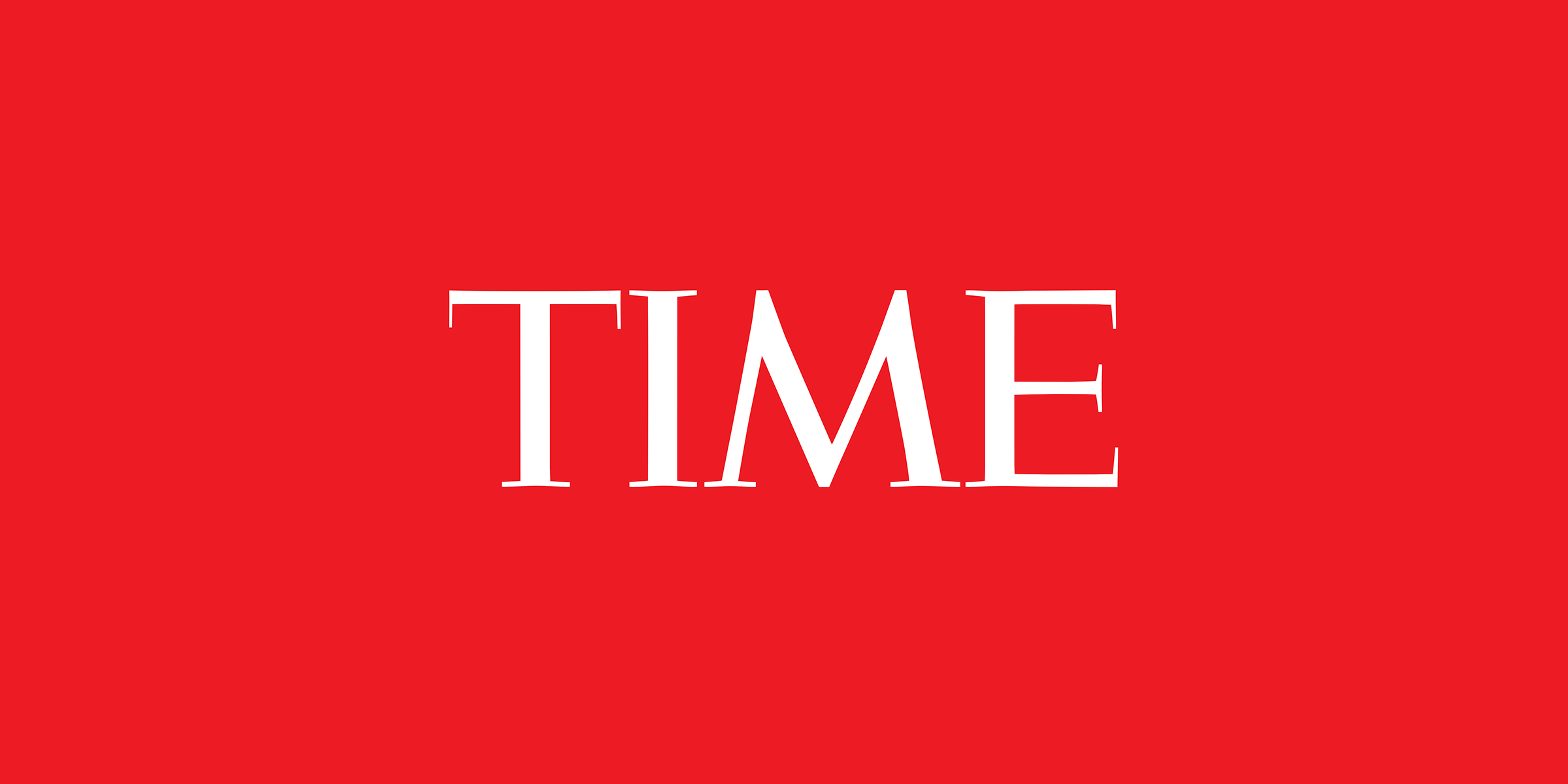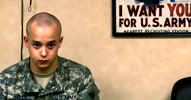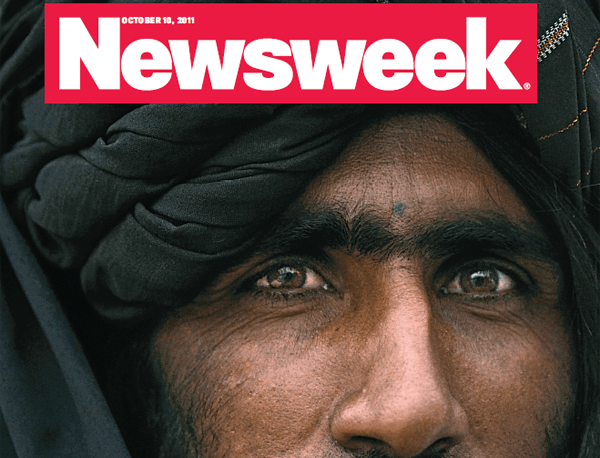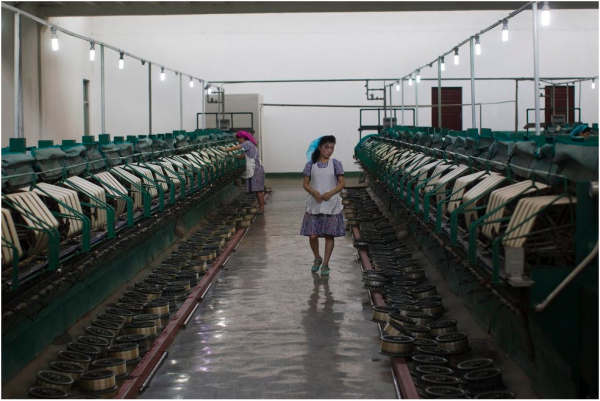“This is where John White preached,” he said. “This is where Alfred Eisenstaedt and Joe Rosenthal stood. This is where Gordon Parks would walk down the halls of the Days Inn with a girl on either side when he was in his 80s. This is where photographers like Bill Frakes would get kids up at 3 in the morning to go out and make pictures so theirs would be better than everyone else’s. This is the place where passion pulses through everyone’s veins 24 hours a day — where sleep is not important.”
Category: Photojournalism
-
The Eddie Adams Workshop’s 25th Year
-
USA Today staff photographers won’t be at the London Summer Olympics
because Gannett’s US Presswire team will be shooting there
-
The Great John H. White
My first thought was, “I hope he means John H. White.”
Several weeks later, he confirmed, that indeed, he was looking for me to hang out with John a bit for a cover story honoring John on the 30th anniversary of his Pulitzer Prize. -

The New Photojournalistic Social Advocacy: Nuru Project
LightBox | Time
Read the latest stories about LightBox on Time
via Time: http://lightbox.time.com/2012/05/11/nuru/#1
Reed noticed that, while his fellow photographers often spoke of that urge to give back, they lacked a platform to do so in an organized and sustained fashion. In 2008, he and some art- and business-minded friends founded Nuru Project—“Nuru” meaning “light” in Swahili—to fill that void. The business now has relationships with well-known photojournalists, including TIME contract photographer Yuri Kozyrev, and the group is looking to grow with an upcoming Kickstarter drive aimed at funding a marketing campaign. Reed says that response to the project has been positive, but he’s aware of the deeper questions of journalistic integrity that are raised by his brainchild.
-
Doug Mills’s Photos of President Obama’s Secret Trip to Afghanistan
And so a day that began at a stable ended in a top-secret meeting. Mr. Mills and a group of journalists were told they were about to embark upon a secret mission, to Afghanistan.
-
The Hipstamatic Journalist
The Hipstamatic Journalist
A recent installment of New York Times’ Lensblog features Benjamin Lowy’s use of Hipstamatic as a journalistic tool. On his Tumblr …
Link: http://sparkofaccident.blogspot.com/2012/05/hipstamatic-journalist.html
It’s the emphasis on style that makes me hesitate, as if it were all about finding some visual quirk that lends distinction to the photograph
-

Photo Director Takes No Prisoners in Pursuit of Pulitzers
Photo Director Takes No Prisoners in Pursuit of Pulitzers
Tim Rasmussen expects your best work. And he’ll push you until he gets it. Rasmussen’s drive for excellence resulted in a Pulitzer prize for his team at The Denver Post this year, his second since 2010.
via WIRED: http://www.wired.com/rawfile/2012/04/photo-director-takes-no-prisoners-in-pursuit-of-pulitzers/all/1
Tim Rasmussen expects your best work. And he’ll push you until he gets it.
“Some people just come at you hard, and Rasmussen is definitely a guy who comes at you hard,” says Andrew Innerarity, a former staff photographer at the South Florida Sun-Sentinel where Rasmussen used to be the director of photography. “If you are a weak person he is going to eat you up.”
-

Live Webinar with Newsweek: Why Photojournalism Needs to Elicit an Emotional Response
Live Webinar with Newsweek: Why Photojournalism Needs to Elicit an Emotional Response – PhotoShelter Blog
What Photo Buyers Want: Newsweek’s Senior International Photo Editor, Jamie Wellford Tue, May 1st, 2012 4:00 PM – 5:00 PM EDT Once focused primarily on politics and world affairs, Newsweek has shifted its direction in recent years to cover all current eve
In this live webinar on Tuesday, May 1st, Jamie will discuss:
What separates an average photo from a compelling one in the news industry, and examples of photo stories that have made it into the magazine.
How changes in the editorial industry have affected photographers and the business side of photojournalism.
How photographers can gain the confidence of photo editors and score assignments.
Plus, the best way to pitch your photos and story ideas to major news publications like Newsweek. -
How Two Photojournalists Are Taking on the City’s Gun Crisis
Back in the car, MacMillan is already iPhone-editing video he shot of pulling up to the scene. In a few days, he’ll post the video to GunCrisis.org, an “open-source journalism experiment” he launched last month that aims to explore the city’s homicide-by-gun epidemic and possible solutions while carefully, purposefully, avoiding slipping down the rabbit holes of the gun-policy debate.
-
How we give photographs meaning
Photographs have enormous visual power, but on their own they have absolutely no meaning. The meaning of a photograph is a construct that involves a group of people operating against a specific background (news, art, …), subject to the group’s personal, cultural and political biases
-
Sports Shooter Venue Guide – Lazy Elk High School

Link: Sports Shooter Venue Guide – Lazy Elk High School
To avoid any unpleasantries make sure you check in with one of the assistant vice principals before you start shooting. In exchange for your drivers license they will give you a sideline pass. This pass must be worn around your neck and must remain visible at all times.
Next, the school police deputy will point out any players on the team that can’t be photographed, either because their parents haven’t signed a media release or because they’re facing felony charges.
-
LA Times delayed publication of Afghan corpse photos at Pentagon’s request
When we made the decision to publish, the Pentagon asked us to wait 24 additional hours to protect troops depicted in the photographs. We agreed to push back our publication date until the Pentagon told us they had taken the necessary precautions. In fact, we waited more than 72 hours after their request.
-
Colin Pantall on what photographs tell us
We all like to think that the photographer’s intention inform the image and that when we look at a photograph we can see those intention. But if we ignore the simple fact that we have no way of knowing what the photographer’s intentions were (How would we know? All we have is a photograph), especially in a news context, we don’t just look at photographs, we look at them with our own sets of expectations (as Colin notes) and biases.
-
You don’t look like a victim
You don’t look like a victim
Colin Pantall’s blog about photography, writing, art and politics
Link: http://colinpantall.blogspot.com/2012/04/you-dont-look-like-victim.html
The idea is that one should look a certain way in the face of tragedy, part of the simplistic narrative that is expected of people when they are part of a photograph – a simplistic narrative that does not have an equivalence in writing. Here it is easy to explain the contrast between the glorious sky and the casual dress, the trappings of the picnic and the relaxed poses. These are all allowed to happen, but when it comes to a photograph, God forbid if anybody is caught doing anything that lies outside a very narrow band of expected responses
-
A Cover Story
TIME of course paid more. They always had more budget than Newsweek. As my friend Jimmy Colton, then an editor at NW and now at SI, was fond of saying, “TIME is a hospital. Newsweek’s a MASH unit.” Below is the first cover I shot for TIME, and if I recall, they paid about 3 grand. Other shooters, the real premier cover guys, got more dough, for sure. I was definitely not in that group. If I got a cover, it was either an accident or a last ditch phone call by a desperate editor.
-

David Guttenfelder, Ambassador
David Guttenfelder, Ambassador – Reading The Pictures
I imagine the North Koreans look at these factory shots and feel that Guttenfelder is paying them respect, capturing an ethic of hard work and industry, perhaps believing also that the photos must counter perceptions the country is barely scraping by.
via Reading The Pictures: http://www.bagnewsnotes.com/2012/04/david-guttenfelder-ambassador/?utm_source=feedburner&utm_medium=feed&utm_campaign=Feed%3A+Bagnewsnotes+%28BAGnewsNotes%29
I imagine it’s reasonable, at this point, to consider AP photographer David Guttenfelder an ambassador. After so many visits to North Korea (and so many thoughtful images), he has gained their trust and, with it, an unusual degree of access. What’s special and fascinating, though, is the way his wonderful photos apparently represent so differently to the (very sensitive) powers-that-be in that culture as compared to how they read to us in the West.
-
Tim Hetherington’s legacy: A mother’s perspective on her son’s war photography
Tim Hetherington’s legacy: A mother’s perspective on her son’s war photography
Judith Hetherington talks about her son’s legacy on the eve of his first major posthumous solo exhibition.Judith Hetherington talks about her son’s legacy on the eve of his first major posthumous solo exhibition.Judith Hetherington talks about her son’s l
via Washington Post: http://www.washingtonpost.com/blogs/arts-post/post/tim-hetheringtons-legacy-a-mothers-perspective-of-her-war-photographer-son/2012/04/11/gIQAtqqxAT_blog.html?wprss=rss_world
“I didn’t really worry,” Judith Hetherington, mother of “Restrepo” co-director Tim Hetherington said. “I didn’t because I don’t think we can do anything about it. Tim had chosen his path.” In nine days, it will be the one-year anniversary of his death in Libya. Thursday will be the opening of his first posthumous solo exhibition.
-
At Bosnia Reunion, Journalists See Unfinished Work
At Bosnia Reunion, Journalists See Unfinished Work | PDNPulse
Over 400 Bosnian and foreign journalists who covered the Bosnian war gathered in Sarajevo last week for the 20th anniversary of the outbreak of the conflict. But the reunion, organized by former Le Monde correspondent and editor Remy Ourdan and TV reporte
via PDNPulse: http://pdnpulse.com/2012/04/at-bosnia-reunion-journalists-see-unfinished-work.html
“It wasn’t very celebratory,” says Gary Knight, VII. “For so many of us, there was an affirmation that we need to get back to work in that country.”
-
Rich Clarkson – What should photographers know?
let me tell you personally how I have always hired people — whether for a staff position or a single assignment. Bob Gilka used to say that I was the best “discoverer” of new talent in the country. To me, it was always simple for the best people were easy to pick — and Bob had picked some pretty good ones in his time, too. Good people, with intelligence, commitment and “fire in the belly” just stand out. I have always been more interested in the personality than the portfolio.
